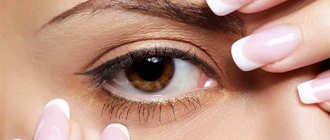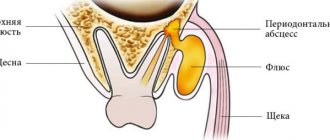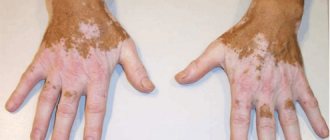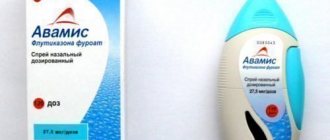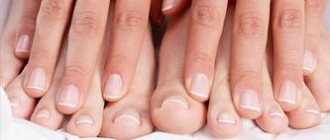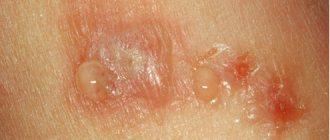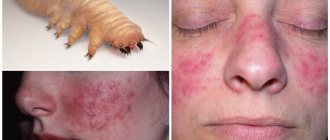- Erysipelas on the leg - what is it?
- Erysipelas on the leg: causes of the disease
- Erysipelas on the leg: is it contagious?
- Symptoms of erysipelas on the leg
- Forms and types of erysipelas on the leg
- Erysipelas on the leg: effective methods and features of treatment
- Erysipelas on the leg: prevention
This dangerous disease got its name after the French word rouge, which means red. Indeed, the course of the pathological process is always accompanied by hyperemia, that is, redness of the skin. In the absence of timely qualified assistance, which often happens in cases where patients place high hopes on traditional methods of treatment and lose control of the situation, erysipelas on the leg can cause serious complications.
Description
Erysipelas is an infectious-allergic disease of the skin and mucous membranes, caused by beta-hemolytic streptococcus.
Has a code according to ICD-10 A.46.0. It manifests itself as intense redness of the affected area, serous or serous-hemorrhagic inflammation, enlargement of regional lymph nodes, fever, and symptoms of intoxication. Most often it affects the face and legs. It can acquire a recurrent course, complicated by the formation of necrosis, the development of thrombophlebitis, abscess, and phlegmon. Erysipelas ranks 4th in terms of prevalence in the structure of infectious diseases. It is detected sporadically, there is no transmission to others. Children get sick extremely rarely. From the age of 20, the incidence gradually increases, and at the age of 20-30 men are more often affected, then a predominance of women is observed.
Peak occurrence occurs between 41 and 65 years of age. 70% of the total number of patients are representatives of the fairer sex. The most vulnerable category is older, overweight patients with a complicated allergic history. In 30% of cases there is a relapsing course.
Reasons for development
The pathology is provoked by any strains of group A beta-hemolytic streptococcus. Bacteria of this group are widespread and cause many infections: tonsillitis, pharyngitis, scarlet fever, pneumonia, glomerulonephritis, wound suppuration, and some skin diseases. Most often, the causative agent is Streptococcus pyogenes, which can be found on the skin and nasopharyngeal mucosa of healthy people.
The predominant route of transmission is contact. The pathogenic agent penetrates the skin through cracks, abrasions, abrasions, scratches, and insect bites. The infection is transmitted through dirty hands, clothes and shoes, unsterile dressings and medical instruments. Less commonly, microbes initially enter the nasopharynx and are then transferred to the skin by the patient’s hands. Hematogenous and lymphogenous infection is possible.
Susceptibility to infection varies significantly. In some people, the disease does not develop even with a large area of wound surfaces and heavy contamination, while others become ill with the slightest damage to the skin. The following predisposing factors are identified:
- Physical work . More than a third of patients are people with physical labor: cleaners, loaders, mechanics, carpenters, drivers, electricians. This is due to contamination and frequent microtrauma of the skin during professional duties.
- Elderly age . Pensioners get sick a little more often than representatives of the previous group. Experts explain this by frequent immune disorders, neglect of hygiene rules, general deterioration of the body, and the presence of chronic diseases.
- Other infections . Patients with chronic tonsillitis suffer from erysipelas 6 times more often than healthy people. The likelihood of pathology increases in the presence of caries, diseases of the ENT organs and the oral cavity.
- Local pathological processes . The occurrence of erysipelas of the lower extremities is promoted by lymphovenous insufficiency, lymphedema, trophic disorders (including diabetes mellitus), edema of various origins, and fungal infections of the feet.
- Excess weight . The increased likelihood of disease is associated with favorable conditions for the development of infection that occur when the layer of subcutaneous fatty tissue is significantly thick.
- Tendency to allergies . Many patients have a history of allergic reactions. High allergization is combined with a decrease in the body's immune forces.
- Hereditary predisposition . In 10% of patients, among the closest relatives, people are identified who also suffered from erysipelas.
Early relapses of erysipelas are often caused by activation of the patient’s own microflora. Late relapse (more than 6-7 months after the disappearance of symptoms) and repeated cases of the disease are usually associated with repeated endogenous infection. There are pronounced seasonal fluctuations, with the maximum incidence occurring in the summer-autumn period, from June to October.
Development mechanism
After penetrating the skin, streptococcus enters the lymphatic capillaries and multiplies in them. This leads to abundant production of endo- and exotoxins, which enter the circulatory system and spread throughout the body, causing fever, chills and intoxication syndrome.
The local inflammatory process is infectious and allergic in nature. Immune complexes are formed in the skin of the affected area, causing complex damage to small blood and lymphatic vessels. Clots and microthrombi form in the lumen of the capillaries. The walls of blood vessels are destroyed. Multiple hemorrhages occur. Disorders of local circulation lead to the formation of blisters with serous or serous-hemorrhagic contents.
If the hemorrhages are deep, or another infection is attached, the process may become more aggravated with the formation of areas of necrosis, the development of phlegmons and abscesses. As a result, sclerosis of the lymphatic vessels and replacement of the skin with connective tissue is observed. Multiple relapses contribute to the accumulation of pathological changes and the development of progressive disorders of lymph outflow.
Classification
Russian experts usually use Cherkasov’s classification, which distinguishes the following types of erysipelas:
- According to local symptoms : erythematous, erythematous-bullous, erythematous-hemorrhagic, bullous-hemorrhagic.
- According to the severity of intoxication syndrome : mild, moderate and severe.
- According to the nature of the course : primary, repeated (forms after 24 months or more in another place), recurrent (develops within up to 24 months or manifests itself in the same place after more than 2 years).
- According to the volume of the lesion : localized, migrating, metastatic (with the formation of distant foci).
Complications of erysipelas can be general and local. In the long-term period, the following consequences are distinguished: lymphedema, secondary elephantiasis.
Indications for the use of antibiotics
Which antibiotics can be taken for erysipelas and which ones cannot be taken - this should be determined by the attending doctor. To do this, he conducts an examination and studies the patient’s personal medical record, as well as the state of the inflammation itself.
There are certain situations that are direct indicators for the use of antibiotics for erysipelas during the treatment process. These cases include: a diagnosis of developed erysipelas, as well as the lack of positive results after treatment with other methods and means.
Symptoms
Photo: fb.ru
Common manifestations of erysipelas
During erysipelas, four periods are distinguished: incubation (from 3-4 hours to 5 days), prodromal (sometimes absent), pronounced clinical manifestations, convalescence.
The incubation period can be established only with post-traumatic erysipelas. In 98% of cases, the disease begins suddenly with a sharp increase in temperature, weakness, nausea, headaches, chills, and muscle pain. In severe cases, convulsions and delirium are observed. Regional lymphadenitis is often detected, pain and limitation of movements in the joints are possible.
After a few hours, or less often the next day, itching, burning, and a feeling of fullness in the affected area occur. In 60-70% of cases, the legs are affected, in 20-30% – the face, in 4-7% – the arms. Swelling and hyperemia are visually detected. The palpation is moderately painful.
During the peak period, the general symptoms progress, the outbreak takes on the appearance of a “geographic map” - a bright red spot of a complex shape with clear boundaries. A bluish tint indicates lymphostasis, a brown tint indicates the presence of trophic disorders. General manifestations persist for 5 days, in severe cases up to 7 or more days. Local signs of erysipelas are detected up to 5-8, less often 12-15 days.
During the period of convalescence, the duration of which varies from several weeks to several months, pigmentation and some swelling of the skin, local hyperemia due to blood stagnation are detected. Low-grade fever, local skin thickening, lymphadenitis indicate a risk of relapse.
Symptoms of various forms of erysipelas
Erythematous erysipelas accounts for almost half of the cases. It is characterized by the appearance of a reddish spot, which after a few hours transforms into a classic “geographic map”. The skin of the affected area is hot, tense, infiltrated, and swollen. Sometimes the changed area is surrounded by a low ridge.
Erythematous bullous erysipelas is diagnosed in 25% of patients. In place of a typical spot, bubbles (bullas) form. If the integrity of the bladder is violated, serous fluid flows out of it. Whole bullae gradually decrease in size and transform into brownish or yellowish crusts.
Erythematous-hemorrhagic erysipelas is found in 18% of cases and occurs 1-3 days after the manifestation of the erythematous form of the disease. Accompanied by multiple hemorrhages of various diameters.
Bullous hemorrhagic erysipelas is detected in 10% of patients. It develops from erythematous-hemorrhagic or erythematous-bullous forms due to damage to the deep layers of the skin. The contents of the blisters are not serous, but hemorrhagic; the bullae are combined with extensive hemorrhages. The formation of necrosis, suppuration of dead skin areas, and the formation of ulcers are possible.
Complications and consequences of erysipelas
Complications of erysipelas occur in 5-8% of cases. Includes abscesses, cellulitis, tissue necrosis, lymphangitis, phlebitis and thrombophlebitis. More often diagnosed with the bullous-hemorrhagic form. Rare complications include sepsis, cardiovascular failure, pulmonary embolism, and toxic-infectious shock.
Long-term consequences are lymphedema and fibredema - a persistent violation of lymph outflow with the development of elephantiasis. As a rule, such consequences are formed due to the initial inferiority of the lymphatic system due to malformations or other diseases. In a number of patients, hyperpigmentation is detected in the long-term period.
Macrolides
As for the peculiarities of the action of the drugs in this series, it consists in completely suppressing the activity of pathogenic bacteria in the human body, as a result of which it completely subsides and the microorganisms begin to die. However, the second effect is only possible if the doctor prescribes a high dose of the drug.
What antibiotics should I take for erysipelas? The most famous drug from the macrolide series is Erythromycin, which is presented in the form of tablets intended for oral administration (1/4 g, 4-5 times a day, an hour before meals).
Diagnostics
Photo: argumenti.ru
The diagnosis is made taking into account typical symptoms, laboratory tests play a supporting role. The diagnostic criteria for erysipelas are:
- Acute onset with severe intoxication, febrile body temperature.
- The typical location of lesions is on the legs or face.
- A characteristic clearly defined area of redness, possibly with blisters and hemorrhages.
- Enlargement of regional lymph nodes.
- Absence of intense pain at rest.
When conducting laboratory tests, attention is paid to high levels of antistreptolysin-O. In some cases, streptococci can be detected in the blood of patients. The modern method for determining the pathogen is the PCR test. A general blood test reveals signs of inflammation: increased ESR, leukocytosis with a predominance of juvenile forms. With frequent recurrences, leukopenia is possible; studies of the immune system confirm immune deficiency of the hypersuppressor type.
Levomycetins
What antibiotics for erysipelas are used by medical specialists to treat the disease? In case of individual intolerance to penicillin, these are chloramphenicol, which slow down the growth of the number of streptococci in the human body, acting in a manner similar to tetracyclines.
How to treat erysipelas? Antibiotics chloramphenicol are presented in tablets of the same name. They must be taken three times a day, 250 mg. The total duration of treatment with this drug is 1-2 weeks, which depends on the extent of inflammation.
Treatment
Photo: afroditaka.ru
Treatment is usually carried out on an outpatient basis. Hospitalization is required in severe cases, frequent relapses, and the presence of a number of concomitant pathologies. The basis of therapy is antibacterial agents in combination with vitamin therapy and anti-inflammatory drugs. In case of severe intoxication, detoxification therapy is carried out using saline solution, glucose solution, rheopolyglucin and hemodez.
In the erythematous form, local treatment is not required. In bullous forms, the blisters are carefully opened and frequent dressings are performed with furatsilin or rivanol. Large weeping erosions are pre-dried using manganese baths. Important conditions are the inadmissibility of tight bandaging, the ban on the use of antibiotic ointments, Vishnevsky ointment and ichthyol ointment.
Physiotherapy begins from the first days of the disease. First, UVB is prescribed. If swelling, infiltration and inflammation of the lymphatic vessels persist during the period of convalescence, electrophoresis with calcium chloride and lidase, and applications of ozokerite and paraffin are recommended. Laser therapy is effective throughout the entire treatment period. In the early stages, low-frequency laser radiation is used, in the later stages, high-frequency laser radiation is used.
Penicillins
The most common group of antibiotics used to treat erysipelas are penicillin. Products of this type can be presented both in the form of dragees (tablets) and in the form of injection solutions in capsules.
When drugs containing penicillin enter the body, they begin to interact with the enzymes that make up the cell membrane, resulting not only in the destruction of the cell, but also in the death of the microorganism itself, which causes inflammation. Medical specialists, as a rule, prescribe this remedy in cases where the cause of the disease is a bacterium that has the ability to grow and reproduce. It has been experimentally established that treatment with penicillin becomes more effective when it is used in combination with Streptocide or Furazolidone.
The most commonly used antibiotics for erysipelas are Benzylpenicillin, Bicillin-5 and Phenoxymethylpenicillin. The first version of the drug is presented in the form of injection solutions, which should be injected into the affected area twice a day, 250,000-500,000 units each. The duration of treatment in this way can be up to a month. Bicillin-5 is presented in the same form. Injections with this composition are done very rarely - once a month, but for a couple of years. This medication is used to prevent possible relapses. As for Phenoxymethylpenicillin, this drug is offered to patients both in the form of syrup and tablets. The process of treating erysipelas with this type of antibiotic should be carried out within a week if the disease is at the initial stage, and about 10 days if it has already begun to progress.
Medicines
Photo: d-russia.ru
The drug therapy regimen includes the following drugs:
- Antibacterial agents . For outpatient treatment, erythromycin, doxycycline, oletethrin, azithromycin, spiramycin, biseptol or rifampicin tablets are prescribed. If you are allergic to antibiotics, use delagil or furazolidone. In the hospital, antibiotic therapy is carried out by intramuscular injections of benzylpenicillin; with the development of secondary suppuration, gentamicin is additionally administered.
- Vitamins . Complex vitamin therapy is carried out for 15-30 days. Patients are prescribed ascorbic acid, rutin, vitamin A, and B vitamins.
- Lipotropic medications . The use of dipramonium and calcium pangamate can shorten the period of intoxication and increase in body temperature, accelerate the disappearance of erythema and restoration of the skin at the site of exposed bullae.
- NSAIDs . When infiltrates form, oral administration of butadione or chlotazol is recommended.
- Anticoagulants . Required for hemorrhages. The dose of the drug is selected taking into account the coagulogram data. Heparin is administered subcutaneously, Trental is prescribed orally. Electrophoresis is used for local administration of gordox and contrical.
Main groups of antibiotics
For erysipelas, medical experts recommend to their patients antibiotics classified into four main groups: penicillins, macrolides, tetracyclines and chloramphenicol. The drugs assigned to each of them perform certain actions with the protein contained in the body, which, during the process of inflammation, is aimed at the formation of new bacterial cells.
As for the form of release of drugs, they can be presented in the form of tablets, capsules, as well as solutions for injection.
Folk remedies
There are many recipes online for treating erysipelas using folk remedies. These methods can be not only useless, but also dangerous due to overheating of the skin, deterioration of local blood circulation during bandaging, and infection of opened blisters. The widely known “red rag” is safer, but also does not have a healing effect. The use of any medicinal and non-medicinal methods is permissible only during treatment in a medical institution and after consultation with a doctor.
The information is for reference only and is not a guide to action. Do not self-medicate. At the first symptoms of the disease, consult a doctor.
Tetracyclines
It should be noted that penicillin antibiotics for erysipelas are a classic drug. All other drugs can be prescribed only if the patient’s body has an individual intolerance to penicillin.
The peculiarity of the action of tetracyclines is that these components are aimed at inhibiting the process of protein synthesis, which is required for the construction of new bacterial cells.
The most famous and effective drug containing tetracyclines is Doxycycline. This product is presented in the form of tablets, which must be consumed twice a day after meals with water.
Disease prevention
In order not to get erysipelas, you should carefully monitor not only your health, but also your lifestyle. Special attention should be paid to water procedures, which should be carried out as often as possible (maximum once a day). This is necessary so that a person can avoid diaper rash in various places that cause the problem to form. If such occurs, after taking a shower, the body should be treated with powder.
Special attention should be paid to personal hygiene products. It should be noted that for bathing it is best to use shower gel with a pH level of less than 7. The same rule applies to soap. The best option would be a product that contains lactic acid. This is necessary in order not to disturb the protective layer of the skin, the presence of which prevents the occurrence of various infections.
In order to avoid the appearance of erysipelas and subsequent treatment of the disease, it is necessary to promptly treat wounds and injuries that form on the body. For this purpose, it is best to use camphor oil, Yodditsirin, and hydrogen peroxide.
Hygiene rules
If a patient is diagnosed with erysipelas, a medical specialist must recommend that he observe certain rules of personal hygiene, even though the disease is not dangerous to others and the patient can safely stay at home. However, the practice of observing basic hygiene rules can speed up the process of final recovery.
First of all, pay attention to the regularity of showering - it is advisable to do this every day. Experts do not recommend using a bath for such purposes, especially with hot water. There is no need to rub the infected area; simply wash it with soap. After performing water procedures, it is advisable to lie down on the bed with clean linen, which is also recommended to be changed every day. Separate requirements are put forward in relation to the material from which the bed linen is made - it must be natural and soft (preferably cotton).
In addition to taking antibiotics, when erysipelas occurs, it is necessary to wash the inflamed area daily using herbal infusions (it is recommended to take coltsfoot or medicinal chamomile). In the event that erysipelas has formed in the genital area or on the face, it is best to use calendula or string to create decoctions, and if the inflammation is at the healing stage and is covered with roughness, then at this stage it is best to lubricate the affected area with rosehip oil or juice, squeezed from Kalanchoe.

